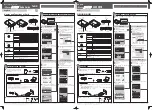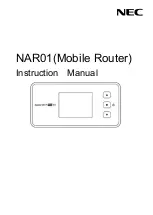
Software User Manual
D-Link Unified Access System
02/15/2011
Document 34CS3000-SWUM104-D10
Page 35
Figure 8: Wiring Closet Topology
The four D-Link Unified Switches are in the same peer group. This allows wireless clients to roam between floors and
between buildings without the need to re-authenticate. Additionally, each Unified Switch shares its list of managed APs and
wireless clients with the switches in the peer group so that the APs and wireless clients are not reported as rogues
(unknown).
The topology in <Link>Figure 8 works well if you need to add, upgrade, or replace LAN switches on your network.
<Link>Figure 9 shows two D-Link Unified Switches in the network data center. In this deployment, the switches do not
connect directly to APs or end-user nodes.
Note:
When tunneled clients are used in conjunction with peer switches, one of the peer switches must be
configured as a default gateway for the tunneled clients. Normally the default gateway routes all traffic from the
client’s subnet to other subnets, however in a peer switch network the Unified Switch that manages the AP to
which the client is associated, routes the frames into the remote subnets. This means that each peer switch must
have routing table entries that enable it to route frames to every subnet in the network.
APs
Unified Switch
Unified Switch
APs
APs
APs
L2/L3 Distribution Switch
To Network
Backbone
Building 1
Floor 2
Building 1
Floor 1
Building 2
Floor 2
Building 2
Floor 1
Unified Switch
Unified Switch
Unified Switch
Unified Switch
APs
APs
APs
APs
















































